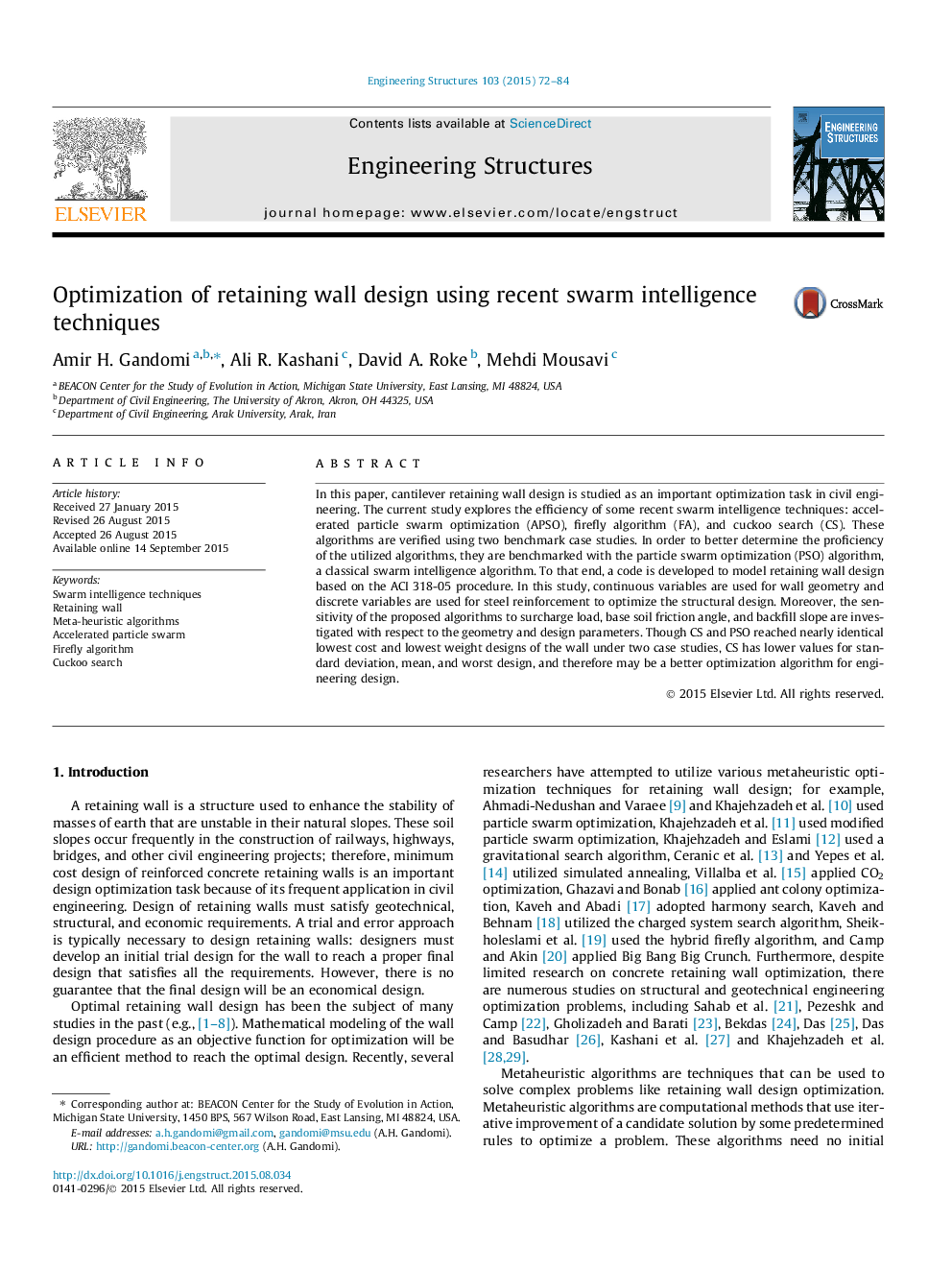| کد مقاله | کد نشریه | سال انتشار | مقاله انگلیسی | نسخه تمام متن |
|---|---|---|---|---|
| 265937 | 504336 | 2015 | 13 صفحه PDF | دانلود رایگان |
• The automatic designing procedure of concrete cantilever retaining wall is introduced.
• Continuous and discrete designing variables are respectively considered for geometry and reinforcements.
• Three recent swarm intelligence techniques are utilized for optimum designing of retaining walls.
• Variations of base soil friction angle, cohesion and unit weight of retained soil are investigated.
• A base shear key influence on final cost/weight design reduction explored in this study.
In this paper, cantilever retaining wall design is studied as an important optimization task in civil engineering. The current study explores the efficiency of some recent swarm intelligence techniques: accelerated particle swarm optimization (APSO), firefly algorithm (FA), and cuckoo search (CS). These algorithms are verified using two benchmark case studies. In order to better determine the proficiency of the utilized algorithms, they are benchmarked with the particle swarm optimization (PSO) algorithm, a classical swarm intelligence algorithm. To that end, a code is developed to model retaining wall design based on the ACI 318-05 procedure. In this study, continuous variables are used for wall geometry and discrete variables are used for steel reinforcement to optimize the structural design. Moreover, the sensitivity of the proposed algorithms to surcharge load, base soil friction angle, and backfill slope are investigated with respect to the geometry and design parameters. Though CS and PSO reached nearly identical lowest cost and lowest weight designs of the wall under two case studies, CS has lower values for standard deviation, mean, and worst design, and therefore may be a better optimization algorithm for engineering design.
Journal: Engineering Structures - Volume 103, 15 November 2015, Pages 72–84
